| |
Nengajou are traditional New Year's postcards in Japan. They are sent to arrive on or after New Year's Day. It's even considered rather awkward if they arrive early! Late is okay, but it's really best for them to arrive on January 1. For this reason, the post office has a special system set up. When correctly marked as a nengajou, cards are set aside for special handling. Then on New Year's Day, they mobilize thousands of extra employees to deliver all the cards on the same morning. There's a long tradition of handmade cards. In the month before New Year's you can buy blank postcards, which you can decorate by hand with stickers and rubber stamps. You can also use a stencil machine, print them from your computer, or simply draw them by hand. Recently, there are also services in camera shops and on the internet to order your own custom designs. People without such creative inclinations can buy them with pre-printed designs. This year, instead of Christmas cards, we decided to send out nengajou. We used stickers and rubber stamps to decorate ours. A nice feature of making them by hand is that it's easy to make each one unique. 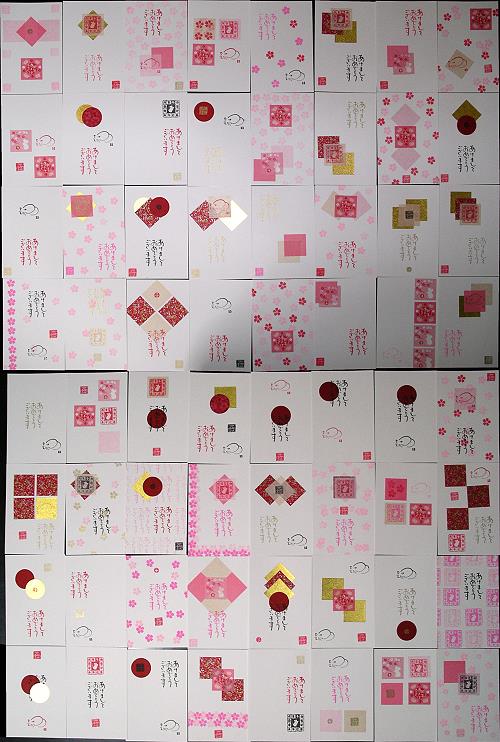 And here's a closeup of one card. 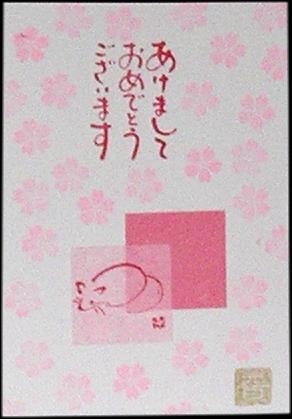 2008 is the "Year of the Rat" on the Asian calendar. There doesn't seem to really be much distinction between mice and rats here (the Japanese word for mouse is actually "small rat"), so it's really treated as the Year of the Mouse. That's why there are all the cute little mice on our nengajou.
[ 4 comments ] permalink
Thursday, December 27, 2007, 7:29 PM GeneralPosted by stefanie One of the biggest frustrations of living in a foreign, non-English-speaking country is learning the language. Immersion is a great thing, especially combined with formal lessons ― on a daily basis, you have to use the language for communication, so you're forced to practice what you've learned. Unfortunately, there's no magic way to go from beginner to fluent in no time flat. In our experience, this leads to an annoying alternation between having a relatively easy conversation and hanging up the phone going "I have no idea what just happened." We're now in Week 2 of the Missing Car Key Saga. It's mostly resolved, though getting there has involved all ranges of the communication spectrum. I made a police report with little difficulty. Between the key guy and our car guy, we've managed to get keys and send the car to the dealership in Morioka for security setup. I was able to work out details of the shipping, return, and payment of the car with no problem. I was feeling very pleased about this; I've been studying Japanese for a little less than a year, I've lived here for six months, and now I can conduct some business. It's much easier than when I had to get my glasses repaired about a week after I arrived in Kitakami ― it might take repetition and talking slow, but no one has to pull up Google Translation to deal with me. Not necessarily, anyway. Yesterday, the police station called about the key. What they wanted to tell me or ask me about the key, I can't say. Almost from the beginning of the conversation, it was clear that we were getting nowhere. Repeated requests to say something again failed to result in comprehension. The policewoman spoke at full speed the whole time; I couldn't remember how to ask her to slow down. After I got off the phone, I felt deflated, having gone from competent to clueless in three short hours. We've discovered that in situations where we're faced with speaking only Japanese for a prolonged period, there comes a moment when we hit a wall, and we simply can't process any more ― it all just washes by us. That whole conversation took place at the wall. We know that the longer we're here and the more Japanese we learn, the times when we can't communicate will lessen. In the meantime, we persevere. Ganbarimasu!
Our first Christmas in Japan is over, save for the sort of "second Christmas" we get by virtue of having family in the U.S. We can call people pretty much any time between the morning of the 25th and the morning of the 26th, and it's Christmas for someone. It's really rather nice. Christmas isn't really a big deal in Japan. It's not a national holiday, so we got mail delivery today, and most people worked. Also, turkey is essentially nonexistent here, so many families celebrate with KFC. We couldn't make ourselves get KFC, opting for an all-American dinner of steak, mashed potatoes, and grilled asparagus. Matthew hasn't had mashed potatoes in at least nine months, so he was pretty excited about them. We did, however, follow tradition and get a Christmas cake. 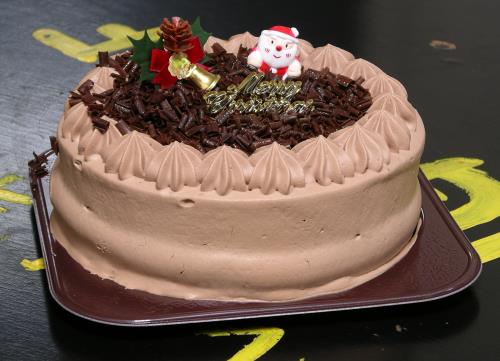 As we've mentioned before, the Japanese Christmas cake is traditionally sponge cake with whipped cream and strawberries. We ordered one with chocolate whipped cream, which turned out to have bits of pineapple and peaches in the middle. It came with a box of strawberries for garnish. 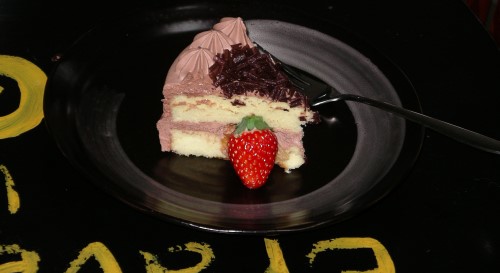 It was pretty tasty, too. Merry Christmas, everyone!
On Toji, the winter solstice, the Japanese greet the end of darkening days with traditions aimed at improving health. Grocery stores are filled with yuzu, a small yellow citrus fruit with a taste and aroma similar to grapefruit. It is traditional to toss a few yuzu into the ofuro, allowing you to relax in a hot bath surrounded by the fragrant oils. Similarly, eating kabocha (Japanese pumpkin) on the solstice is believed to prevent colds in the coming year. We celebrated Toji by mixing traditions ― and cocktails. An acquaintance had gifted us with a kabocha some time ago, so we simmered it for dinner with some fresh ginger (given our track record, we're all about combining as many cold-prevention ingredients and traditions as possible). We filled our ofuro with sliced yuzu for a refreshing end to a difficult week. And, we shook yuzu juice with gin and Cointreau in a celebratory cocktail, raising our glasses to the return of light and the prospect of good health in the coming year.
We've both been here long enough to have unusual experiences and eat unusual things. On the eating front, they've almost always been things we've chosen to eat ― nobody really springs freaky stuff on the unsuspecting gaijin. For example, one night at Hige-oyaji's place, he started showing us some more adventurous Japanese foods, including hizunamasu, a Hokkaido regional specialty. Hizunamasu is thin slices of pickled salmon head, cartilage and all. I rather liked it; it makes a nice accompaniment to a mug of beer. He also showed us his big jar of shiokara, which Wikipedia defines as "small pieces of the [sea] animal's meat in a brown viscous paste of the animal's heavily salted, fermented viscera." It's frequently served with shots of sake, perhaps to no one's surprise after that description. We'd gone there a number of times before that night, so we assumed that he'd only busted out the potentially yak-inducing fish preparations because he knew us well enough to know that we wouldn't gag or otherwise freak out. So it was with little or no trepidation that we visited a new-to-us fish restaurant earlier this week. The owner/chef had a pretty standard set of dishes on his menu: nabe teishoku (hotpot served with rice, pickles, and another side of some type); grilled fish teishoku (same thing, but with grilled fish in place of the hotpot and with miso soup); fried fish, maybe an oyster stew. Matthew ordered the seafood nabe teishoku, I went with grilled fish. Things were proceeding as they usually do until we were served. Then the following conversation took place: MAD: I don't know how to eat a whole fish head. SKD: Oh, farm. Is that shiokara? Indeed, on our trays sat little bowls of shiokara, apparently a standard teishoku dish at this restaurant. We ate our other things, glancing at the ruddy brown dish every now and again. Finally, we each bit the bullet and tried it without the benefit of sake because we still had work to do. And. . . it wasn't half bad ― it was quite salty, and tasted rather like fishy miso with bits of squid in it. Mostly, it was a good reminder of what should be the motto for our lives here: expect the unexpected.
Technology at work on the mailbox outside JR Mizusawa Station: 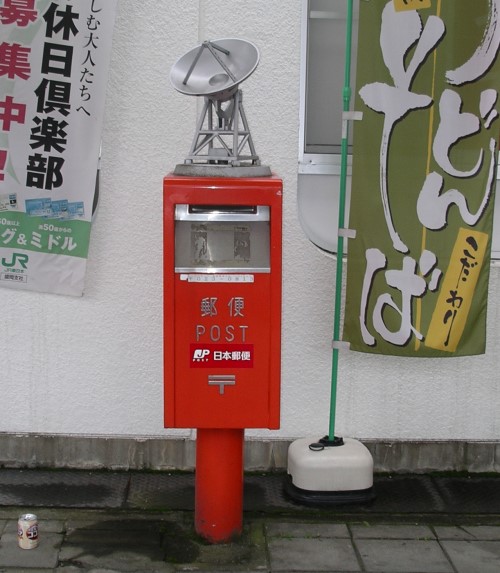 It's actually a model of a radio telescope, presumably to recognize Mizusawa's status as host to one of the radio telescopes in the VERA network. I prefer to think that Japan Post Service simply beams mail out of the box to wherever it needs to go.
Thursday, December 20, 2007, 2:51 PM GeneralPosted by matthew How big do snowflakes get? I mean a single six-pointed lacy bit of ice, drifting down from the sky. When you see big snowflakes coming down, they're not just a single snowflake: each fluffy white "flake" is really a clump of small snowflakes and snowflake parts.
My morning walk with the dogs started with overcast skies, but no precipitation. A few minutes into it, a big snowflake fell near Moki. It seemed a little odd, as it was the only one. I wondered if it had fallen from a tree or something, but there was nothing near. Then a few seconds later, I saw another one. Gradually, more of them began to fall, but it was still an interesting combination of large but very sparse snowflakes.
Then, one landed on my coat where I could get a good look at it. It was one large, intact, snowflake, about half an inch across. A couple of smaller snowflakes (maybe an eighth of an inch) had stuck to it, but didn't hide or damage its delicate structure. It's one of the most amazing things I've ever seen. I spent the rest of the walk catching snowflakes to try to find another one — but all I could get were clumps of small snowflakes and snowflake parts jumbled together.
[ 4 comments ] permalink
Losing My Mind (Among Other Things)
Thursday, December 20, 2007, 1:22 AM GeneralPosted by stefanie It's been a tough couple of weeks for relatively valuable items here at Let's Sharing HQ. Between last week's lost wallet and yesterday's lost car key, we've spent a goodly amount of time retracing our steps (fortunately, Kitakami isn't that big) and revisiting establishments in search of our missing items. And I've become quite proficient at filing lost item reports in Japanese, which is the bright side here. Isn't necessity the mother of language learning? I think I heard that somewhere.
Today's chapter in the lost key saga found me at a small key shop located inside a kitchen supply store, run by an old, weathered Tohoku-jin. Our conversation required patience on both sides: for him, because I need a fair amount of repetition, slow talking, and cognition time before I can understand something, and for me because he spoke with a thick accent and the low, mumbly speech frequently used by older northern Japanese men. And he had a boatload of customers coming in and out, including another guy with a thick accent and mumbly speech. They had a long conversation about something while I waited, drooling over the Japanese knives; for all I know, they were talking about the Amerika-jin with negligible language skills needing a hard-to-make key for a German car.
At any rate, we weren't able to work out a keymaking arrangement today, so he asked me to come back tomorrow. I can't make it, so I offered up Matthew as a substitute with the assurance that he speaks better Japanese than I do. In retrospect, I think I actually told him someone's dad would be coming. Oops.
[ 6 comments ] permalink
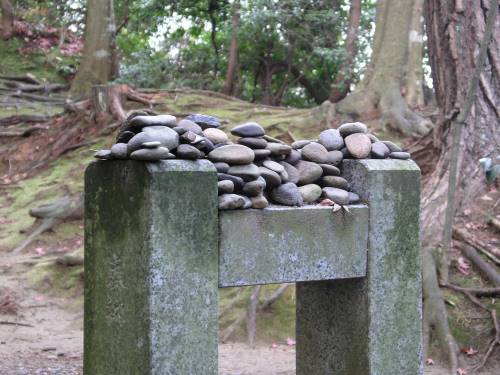 Chusonji is a famous temple in Hiraizumi, about 40 minutes south of Kitakami by car or train. It is most famous for the large main hall and the opulent Konjikido (golden hall) covered in gold leaf and mother-of-pearl inlay. Less well known are the dozens of smaller halls and shrines dotting the grounds. In many places, any horizontal surface has pebbles piled on it. The piling of stones seems to be a sort of prayer enhancement: you make your prayer, then stack stones up towards the heavens. The higher you can stack them, the better.
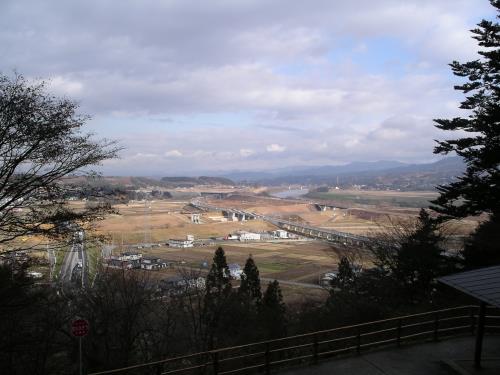 Hiraizumi Hiraizumi is a major historical attraction of Iwate, and the site of Chusonji, the first temple designated as a National Treasure of Japan. The temple is built on a forested hill, where occasional breaks in the trees offer views like this.
[ 2 comments ] permalink
Back Next
|
|









 Calendar
Calendar




